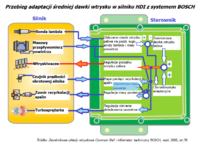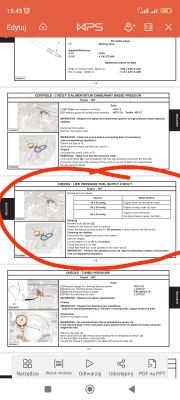EOLYS? The color would match, but a lot of it and a bit too sticky for this liquid

Czy wolisz polską wersję strony elektroda?
Nie, dziękuję Przekieruj mnie tammkaminski100 wrote:If it were as you say there would be no FAP impurities in the fuel as everything would burn up elegantly on a regular basis. Moreover, speaking of the involvement of this EYOLIS in the alleged, shocking contamination of the fuel circuit, they would not be visible in the fuel, only in the oil. There would simply be more oil, which is the first symptom of disturbed FAP firing due to disturbed fuel injection.The DPF is definitely working because the exhaust is clean.
Quote:As a result of frequent burn attempts by the computer, the cumulative presence of cerium in the exhaust gas increases. If the FAP would burn normally, there wouldn't be as much cerium oxide or other substitute in the exhaust.But burning the DPF does not affect the addition of a larger dose of EOLYS, so it should be only as much as needed.
los_dawidos wrote:There is no such thing as "injector balancing control" in the official nomenclature, i.e. ordered by the manufacturer. This is an invention of the manufacturer of the external diagnoscope to "shine" with something, because it is actually a "trinket" that does not bring anything meaningful. Read the topic carefully, and especially look at the current parameters in the table and follow them in engine diagnostics. As you will notice, there is such a mass of information that creating an additional trinket fits like a "flower to a sheepskin coat"..."fuel injector balance check", where "power share/balance" on individual cylinders is: 1.02 (1), 0.96 (2), 1.03 (3) and 0.99 (4).

los_dawidos wrote:I have a small question so as not to start a new topic. I would like to buy a Focus with a 2.0 TDCI engine (i.e. 2.0 HDI from the PSA concern) with a power of 136 HP. The guy sent me a picture of something like "Fuel Injector Balance Check" where the "Power Share/Balance" on each cylinder is: 1.02(1), 0.96(2), 1.03(3) and 0.99(4).
A friend, in turn, said that these values should be as close to zero as possible, and the above makes it expected that the injectors will be in the next few, several thousand. miles to replace. How is it actually?
mkaminski100 wrote:I will be very grateful for any hints
mkaminski100 wrote:According to the computer, the DPF is regenerating, but the can itself is lukewarm, so I don't really believe it.
mkaminski100 wrote:The pump will flush gasoline
mkaminski100 wrote:I can do injectors for cleaning
 .
.
